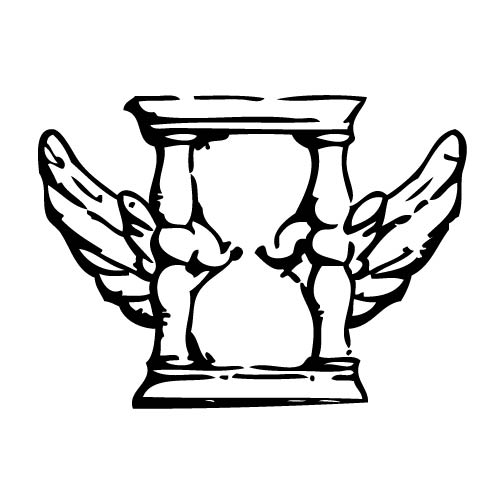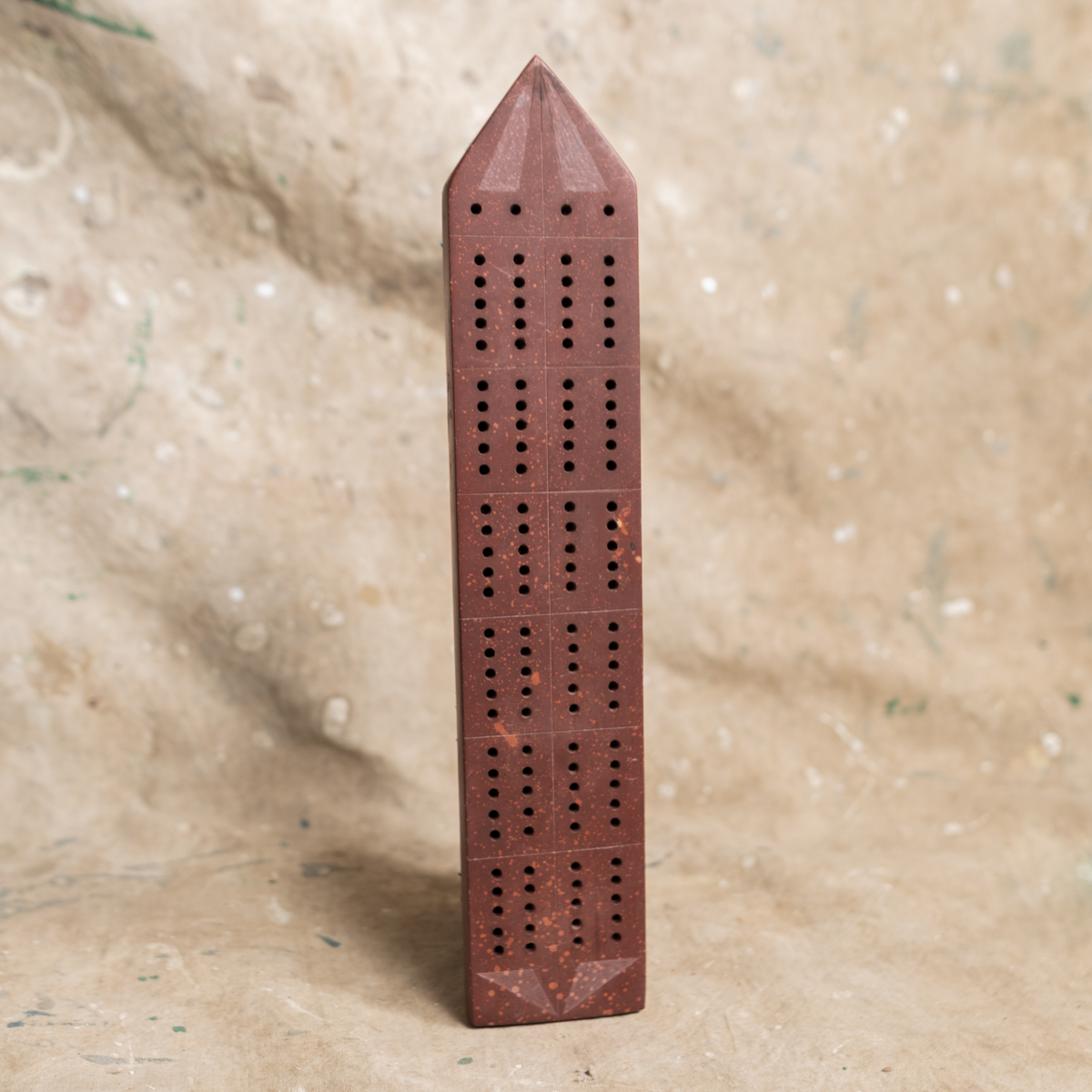Description
Although tabletop-sized, this stone cribbage board takes a monumental form, one that casts a long shadow in American history.
Catlinite, also called pipestone, is a brownish-red stone prized by Plains nations Native Americans for use in the carving of ceremonial pipes. The term “Catlinite” came into use after 1836, when George Catlin “discovered” the Minnesota pipestone quarries which had been in use by Native Americans for 3,000 years. American settlers and Native Americans shared the quarry until the mid-19th century, when white settlers seized control. They began to manufacture pipes as souvenirs and, in a cruel irony, to trade with Native Americans. Meanwhile, the Plains Native Americans who had quarried pipestone for millennia were forced from their ancestral lands onto reservations in the west. The Yanktons — a subgroup of the Dakota tribe — won a modicum of justice for the theft in 1928 when the Supreme Court awarded them compensation from the United States government.
Although its skillful creator is unknown, the cribbage board embodies the contradictions and conflicts inherent to Catlinite in its combination of elements of recalling Native American design motifs within a game originating in England.
Composed of a thick slab of the red stone, the board has a diamond prow, with drilled holes for pegs and subtle incised decoration. As a sculptural object, the piece is both a stand-alone work of art in addition to playing the role of a functional game board.
Condition
Very good with minor wear.
Measurements
2.25 x 12 x 0.5 inches.
Shipping
Free in the continental United States. If an international buyer, please contact me for a shipping estimate by clicking here.












